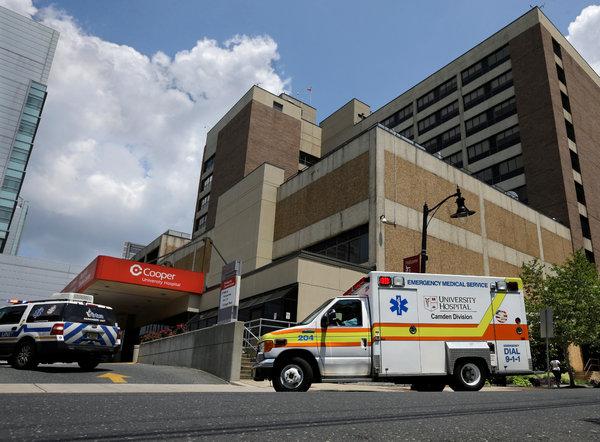Knowing whether to use an urgent care center, a retail clinic, virtual care or the emergency room can make a big difference in cost.

Outside the emergency room at Cooper University Hospital in Camden, N.J.CreditCreditMel Evans/Associated Press
By Richard Klasco, M.D. and Richard Zane, M.D.
Emergency care has always been expensive. Recently, though, a perfect storm of high-deductible insurance plans, new venues of care such as stand-alone emergency departments, and insurers who deny payment based on retrospective review — that is, based on the patient’s final diagnosis rather than the original complaint — has elevated concerns about cost to a level that might best be described as sticker shock.
But people might be less likely to face sticker shock in the emergency room if they recognized that it isn’t always the best place to go for treatment. Depending on what a patient’s symptoms are, it may be worth considering other options for same-day care. In order of increasing services that can be provided, and increasing price, the options are: primary care, virtual care, retail clinics, urgent care centers, and emergency departments (E.D.s).
-
Retail clinics: For unscheduled, in-person care, retail clinics — found in pharmacies, supermarkets and other retail locations — are the least expensive option. They are designed to provide quick care for minor problems like sore throats. As an example, CVS Minute Clinics typically charge $99 to $129. Care is typically rendered by a nurse practitioner or physician assistant.
-
Urgent care: Urgent care centers such as Concentra and CityMD offer walk-in care for illnesses and injuries that are not life threatening. Charges for simple complaints, such as sore throats, run $150 or more. Urgent care centers may be staffed by a physician assistant, a nurse practitioner or a physician.
-
Emergency rooms: There are now three types of emergency departments: stand-alone E.D.s, mini-hospital E.D.s and traditional hospital E.D.s. All are staffed 24/7 by board-certified emergency physicians. All are able to deliver lifesaving care. And all are similarly expensive. Stand-alone E.D.s are usually the quickest and most convenient. Traditional hospital E.D.s are best equipped to handle severe emergencies, such as major trauma.
Using sore throat as an example, health insurers reimburse emergency departments at an average of $956 for a sore throat, compared with $131 at an urgent care center. While the patient’s financial responsibility varies from insurer to insurer, emergency room co-payments are generally higher than they are for urgent care, and the bill will be higher than it would be at a retail clinic or urgent care center.
But cost cannot be the sole concern. Potentially serious problems require a visit to the emergency room. For example, adults with chest pain — particularly those with a history of cigarette smoking, diabetes or other cardiac risk factors — should be evaluated in an emergency room. Visiting one of the other venues risks turning one bill into two, as a referral to an emergency room is likely. It also risks a delay in receiving potentially lifesaving care.
How to know where to go? The chart shown above, adapted from the National Hospital Ambulatory Medical Care Survey, provides cost-effective suggestions for the 10 most common reasons that people visit an emergency room. Of course, the chart offers only general guidelines. Patients must exercise reasonable judgment and, whenever possible, consult their primary care physician.
Checking with one’s insurer before visiting the emergency room can be critical for avoiding sticker shock. High deductible, high co-payment plans put the onus on the patient to choose wisely.
While high medical costs cannot be completely avoided, choosing the right venue for care can minimize the potential for sticker shock.
Advertisement


